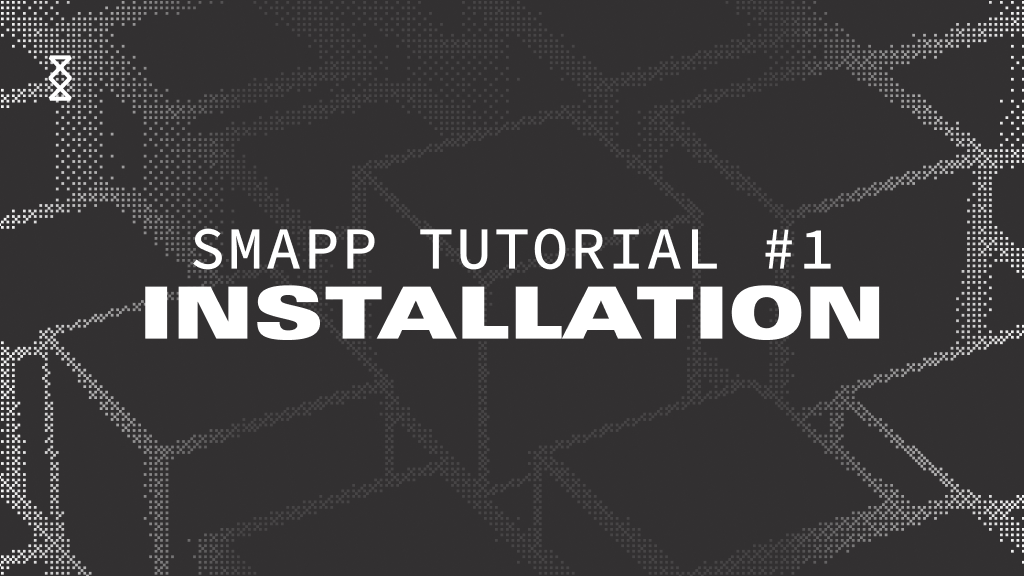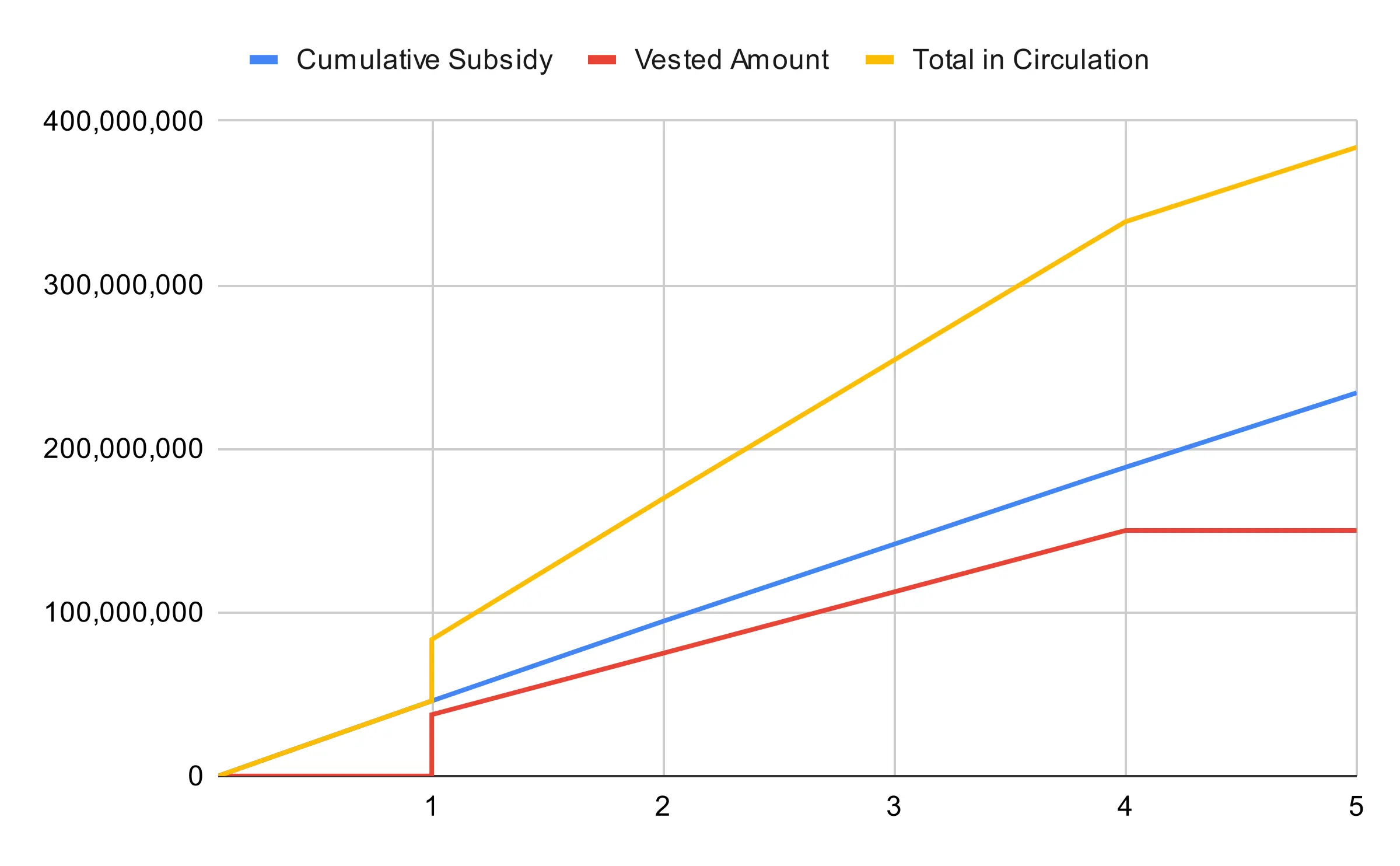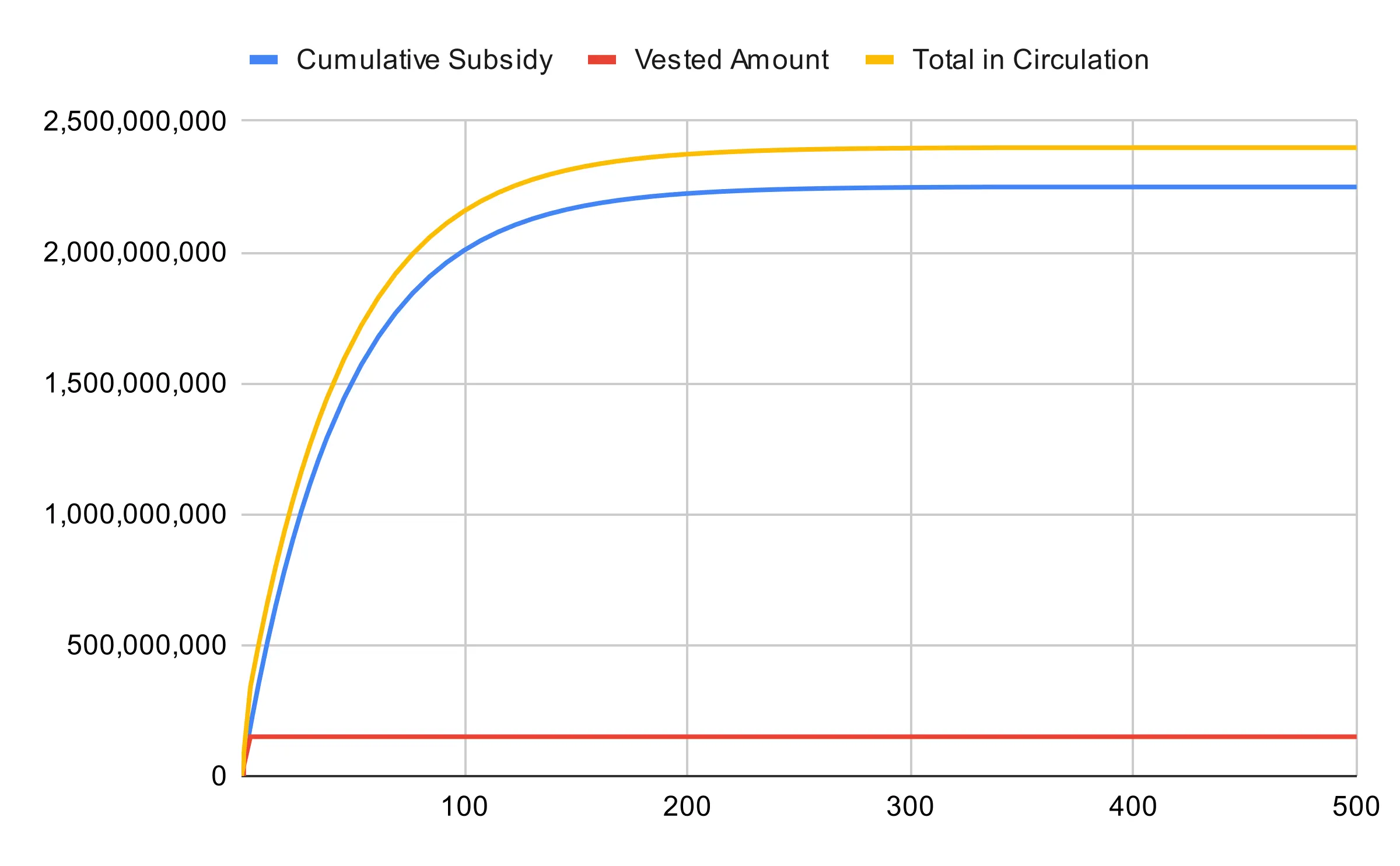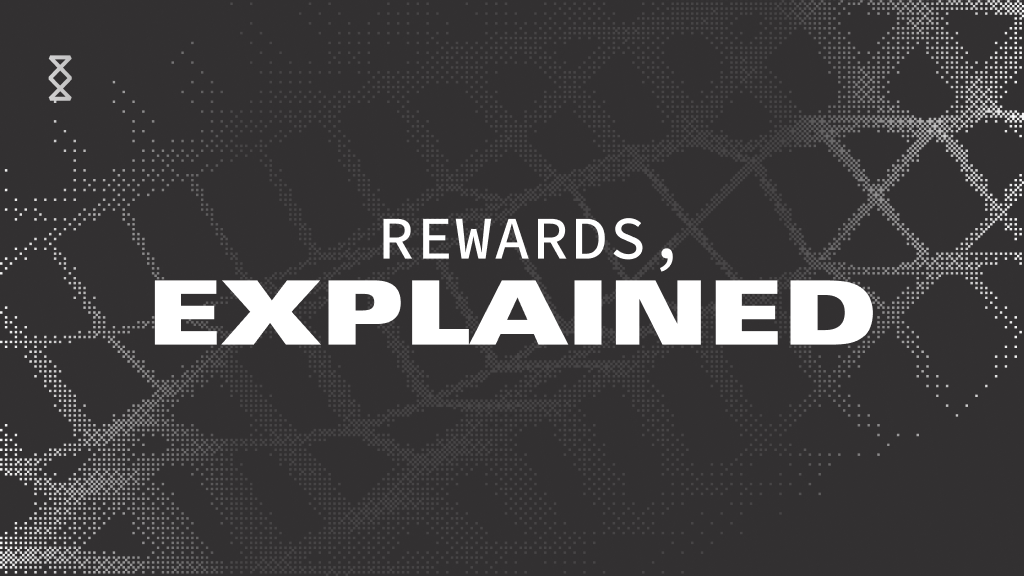Start Smeshing
Smesh from your home computer.
No specialized equipment, no mining pools, no technical knowhow needed.
Spacemesh app
Installing and running the Spacemesh App (Smapp)
To learn how to install the app, please take a few minutes to watch this video guide:


System Requirements
System Requirements
The following are the requirements for running a full Spacemesh node using Smapp.
Minimum requirements for running a node
- An Intel or AMD x86-64 or 64-bit ARM CPU, including Apple Silicon (but not Raspberry Pi) with a memory of 1GiB+
- OS should be Windows 10/11, MacOS, Ubuntu 22.04+ or Fedora 36+
- 100 GiB of free disk space
- An always-on, unmetered Internet connection capable of 5 mbps download and 1 mbps upload
- Visual C++ runtime must be installed
Minimum requirements for smeshing in addition to running a node
- An additional 256 GiB of free disk space (356 GiB total)
- CPU support for AES-NI
- Any GPU with OpenCL support
To support more than the minimum space allocation for smeshing, or to allow uninterrupted use of the computer while the node is running, it is recommended to have:
- A hard drive that can sustain at least 100MB/s of sequential read
- A multi-core CPU from the last 8 years
Costs and Warnings
Costs and warnings
Those who run a Spacemesh full node should not run into any excessive costs. However, running the node will require a computer that can remain on 24/7 (we recommend a desktop PC for this reason), which will come with power costs in accordance with those typical to your location.
Work in Progress
All coins smeshed on the Spacemesh mainnet are real, but we want users to be fully aware that we are still in the process of perfecting the platform. This will mean possible crashes and frequent centralized updates for the first few months after genesis.
Additional Equipment
If your machine meets the minimum requirements, then there is no need to purchase additional equipment to run a Spacemesh full node. We discourage any such purchases, in fact, since there is no guarantee that you will recoup your investment. Spacemesh is ideally run based on the free disk space you already have available.
Updates
You can expect semi-automatic or fully automatic updates. Please update to the most recent version wherever notified.
Network Health
You can check on network health by consulting our network status page.
Possible Complications
- Bandwidth limits: In the early stages, Spacemesh might require more than anticipated network bandwidth, a stable network connection with 10Mbps should be enough to be an active participant in the network.
- ISPs: Some ISPs are not that friendly to p2p traffic. We recommend users who encounter issues as a result to utilize the “disable-reuseport” option in the configuration.
- Smeshing and POST initialization: Spacemesh requires a GPU and OpenCL working in the system. In the vast majority of cases, they come with the GPU drivers. Please consult your GPU manufacturer guidelines on how to make it available (should be no-op on Windows). In case of a problem, please fill in a detailed bug report. We cannot check every GPU configuration and every GPU combination. There are a few known problems with hybrid GPU setups, if it’s not working as expected, please try first to disable the onboard GPU.
Helper tools:
- Here is a tool that is able to check the performance of your CPU and HDD, allowing you to estimate how much space you can contribute. This is what smapp runs when preparing for smeshing.
Rewards
Rewards & Issuance
SPACEMESH ISSUANCE SCHEDULE
The total amount of Spacemesh coins that will ever exist is 2.4 billion. 93.75% of the total (2.25 billion) is incrementally minted as block subsidy, while 6.25% (0.15 billion) is reserved for team rewards and initially inaccessible. The block subsidy is issued in each block, according to the subsidy issuance schedule. Team rewards are initially locked in special vesting vaults. They gradually get released for withdrawal according to the vesting schedule, starting a year post-genesis.
At a very high level, subsidy issuance happens following an exponential decay function over close to 2000 years. Team rewards start vesting a year after genesis and finish vesting 3 years later.
First 5 years and first 500 years of issuance

ISSUANCE OVER 5 YEARS

In the 277th year post-genesis the layer subsidy drops below 1 SMH, so the total circulating supply doesn’t change much after the period shown in this chart, although it does formally continue into the 1893th year before stopping entirely.
Subsidy Issuance
Smeshers that participate in block production receive block rewards. Those rewards have two sources: newly minted coins (referred to as block subsidy) and fees collected from transactions included in the block.
The amount of new coins generated in every block gradually decreases following an exponential decay function, until it eventually reaches zero. After that point smeshers will only receive the fees collected in each block as their reward.
The total accumulated subsidy amount at each layer is governed by the following formula:

Definitions:

To calculate the amount of new coins in a given layer, we calculate the accumulated subsidy for the current layer and the previous layer and subtract the latter from the former.
Vesting Schedule
Rewards allocated to members of the development team, the Spacemesh company and investors that helped fund the development of the protocol and implementation are minted and distributed to their beneficiaries at genesis in a special kind of vault account, but cannot be moved until they vest.
During the first year after genesis none of the reward funds is accessible. Only after a year passes, 25% of reward coins become available to withdraw from the vaults. From this point on rewards vest layer-by-layer linearly, such that vesting completes exactly 4 years after genesis.
This scheme was intentionally devised to ensure that the vested team rewards, at any given time, remain lower than the accumulated block subsidy.
Analysis
The following table shows when each decile of the total SMH supply will be in circulation.

Rewards Explained


FAQ
Frequently Asked Questions
Browse our FAQ.
The Community
Get in touch with the Spacemesh community. Visit our Discord server.
Why Spacemesh
Why Spacemesh
Despite the dearest hopes of many techno-optimists, it isn't always the case that the best technologies win.
The prevailing assumption that the most ethically sound and necessary technologies are the ones to succeed is challenged by marketplace realities. Success in the marketplace is driven by profitability, ease of adoption, and consumer demand, which don't necessarily align with what is considered ethically best or globally required. Examples like electric vehicles and digital privacy tools underline this paradox, with these vital technologies struggling against market forces favoring convenience, affordability, and familiarity. And of course, existing infrastructure.
So how do we ensure that the technologies we truly need actually get adopted?
And why does Spacemesh represent one of these technologies?
Money as a Map
Money and maps are seemingly distinct, yet closely connected when we consider their essential roles. One of the striking similarities is that both are representations of something else. A map condenses intricate geographical details into a format that's easily understood, offering a way to navigate the physical world. Much like a map, money is also a symbol, a representation of value that allows for the exchange of goods, services, and labor in our economy.
Furthermore, both money and maps serve as potent tools of communication and standardization. A map simplifies and communicates complex spatial information, becoming an understandable medium for its reader. In the same vein, money conveys value in a standardized format, offering a universal measure that enables us to compare the value of a wide variety of goods and services, thus facilitating trade.
Trust is another critical aspect shared by both money and maps. We rely on a map's accuracy in portraying the terrain, and without that trust, its utility diminishes. Money operates on a similar principle of trust. We believe in the value attributed to a piece of paper or a digital number in our bank account and that others in our economic system will accept it as payment.
Money and maps serve as symbolic representations, communication tools, trust-based systems, simplifiers, and evolving entities shaped by technological advancements. They both enable us to navigate through complexities—one through the physical realm, the other through the economic landscape of value.
Our Map is Broken
Fiat currencies—that is, currencies that are not tied to a commodity—are not a reliable map.
The essence of a map lies in its consistency, precision, and predictability. It is meant to remain unchanged, regardless of the viewer's perspective or the passage of time. On the other hand, the value of fiat currency fluctuates according to market dynamics, public sentiment, and governmental policies, among other factors. While maps stay consistent, the relative value of fiat money can change rapidly, thus failing to provide a stable "map" of value.
Another failure of fiat currency in this regard lies in the issue of trust and credibility. A map's accuracy is largely verifiable through physical evidence, making it an object of inherent trust. With fiat currencies, trust is placed in governmental and economic institutions to maintain the currency's value. However, this trust can be shaken by factors such as political instability, economic mismanagement, and fiscal policy changes. As such a fiat currency's reliability is not self-evident and can be undermined, weakening its function as a symbol of value.
This is where cryptocurrencies come in.
Bringing Back Accountability
In order for money to function as it's meant to, it needs to have the same kind of accountability that maps do. The veracity of maps can be confirmed through reference to the physical realities they represent. With money, then, we also need a reference point.
In the past, this was done by tying money to a physical commodity, such as gold and silver. The gold and silver themselves were not valuable, but they were a physical representation of the resources used to mine them—human labor, equipment, water, etc.
In the present, we now have the technology to achieve this without physical mining. The blockchain that underpins cryptocurrencies is likewise a representation of expended resources: computational power, in the case of Bitcoin; storage space, in the case of Spacemesh. By having a currency tied to a blockchain that can only be created through effort, and not through the whims of central banks, we bring back the accountability necessary for money to function as a map.
Breaking Through the Crypto Bubble
Despite the pressing need for humanity to have a new kind of money which actually works in their best interests, crypto remains obscure to the vast majority of people. And there are no cryptocurrencies that presently function like currencies; most have become stores of value.
In order for crypto to live up to its true potential as a transformative technology—to become a true People’s Coin—it needs to be accessible to many, many more people. And for that, we need a form of cryptocurrency that has a low barrier to entry, is fairly distributed, and is highly resistant to centralization.
And for that, the People’s Coin has to have certain characteristics.
Firstly: it has to be race-free.
What's So Great About Race-Free
In the context of blockchain or crypto protocols, the term "race-free" refers to a design wherein the sequence or speed of events does not confer any advantage to a participant. This is contrary to systems in which participants are involved in a competitive "race" to execute actions faster than others to gain an upper hand.
A significant feature of race-free protocols is the reduced reliance on high computational power. Protocols like Bitcoin involve miners competing against each other to solve intricate mathematical problems. The first to solve it gets the privilege of adding the next block to the blockchain and receiving a reward. This approach leads to centralization, because participants with more computational power dominate the network due to their higher chances of winning the "race".
The most salient feature of race-free protocols is that they ensure that even those participants who are equipped with less powerful hardware or slower internet connections can engage equally in the network. This attribute reduces the proclivity towards centralization around participants with the most resources, and also means that participants get fairly rewarded based on how much they’ve contributed. Spacemesh is Also Lottery-Free
Proof of Stake-based protocols, as well as other Proof of Space-Time-based protocols, rely on a lottery rather than a race. Instead of "winners" being determined by computational power, as is the case with PoW, they’re determined by probability. The more "stake" you have in the network, or the more space, the higher your chances of winning this "lottery".
The outcome is much the same. Whether the mechanism for creating a block and getting rewards is a race or a lottery, resources need to be centralized into "mining pools" to improve the odds of getting a payout. This discourages small home miners from joining the network—especially those who lack the knowhow to get involved with mining pools.
In a race-free protocol, this additional barrier to entry is entirely absent.
Accessible Technology
Another characteristic of the People's Coin is that it must run on technology that is broadly available and affordable. Ideally, it must not require any additional purchases at all.
The Spacemesh protocol runs using free storage space on your computer, and can be initialized with any popular GPU from the past few years. So, anybody with a medium-spec modern PC can become a part of the network and start earning smesh coins.
Spacemesh also offers a straight-forward, easy-to-use application, allowing for those who are not especially technical to become involved. Combined together, these elements broaden the scope of our reach considerably.
Tailored for the Home Miner
A People’s Coin must account for the little guy, and that’s exactly what Spacemesh is set up to do. Spacemesh is resistant to centralization precisely because it doesn’t penalize home miners: In fact, home miners have an advantage of big whales, because they aren’t paying any big overhead or maintenance costs.
Home miners can expect small but consistent rewards, as fair compensation for their contribution to the network.
Risk-Free
The beauty of such a low-barrier, accessible platform is that the only ones who really stand to lose anything are people who invest a lot of money into fancy rigs. If you already have the hardware and free disk space you need to get started, then you have very little to lose (at most, some additional electricity costs for keeping your PC running), and a great deal to gain.
What Does This Mean For You?
By joining the Spacemesh network and smeshing coins, you will become another link in an ever-growing global community. A node in a new kind of global, decentralized financial network, now accessible to more people than ever before. And the more people join, the more Smesh will function like a true currency—something that can be used for everyday exchanges of goods and services, and not just another digital asset.
This is important, because it’s the cryptocurrency that reaches the most people that can actually create a revolution in decentralized finance and collective governance. Wide distribution is the only means to make a true “People’s Coin”.
A People’s Coin is a different kind of cryptocurrency: fairer, more decentralized, and more accessible. By joining us and smeshing on the Spacemesh network, you will help with the adoption of a technology that is not only useful, but necessary and ethically sound. You will not only earn Smesh, but help to build a better future for everyone—creating the infrastructure for a form of money that actually functions as a map of value, and not just a way for governments to recklessly manipulate their economies. You will help us turn Spacemesh into the People’s Coin that the world so desperately needs.
So, what are you waiting for?
Protocol overview
Protocol overview
coming soon ...
Report an issue
Report an issue
Noticed something isn't working right? Please browse our open issues to see if it's already being addressed. If not, please visit out Discord server and report a bug.